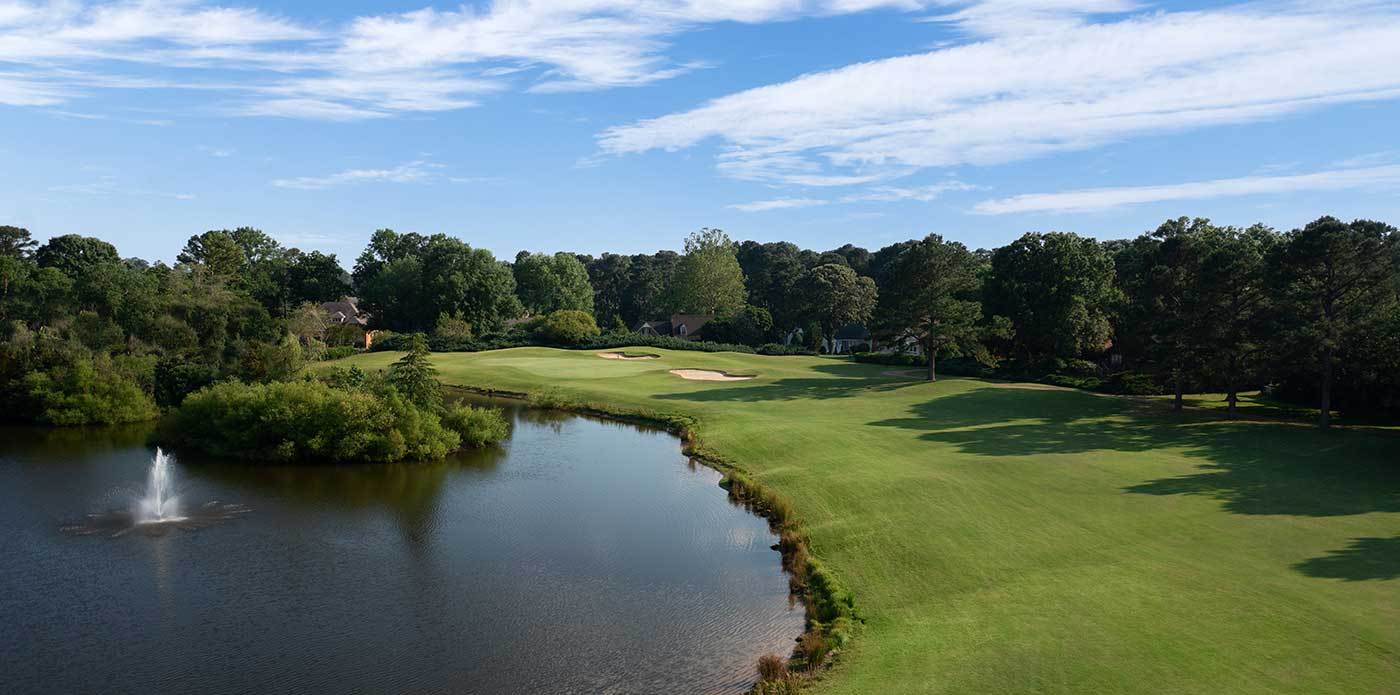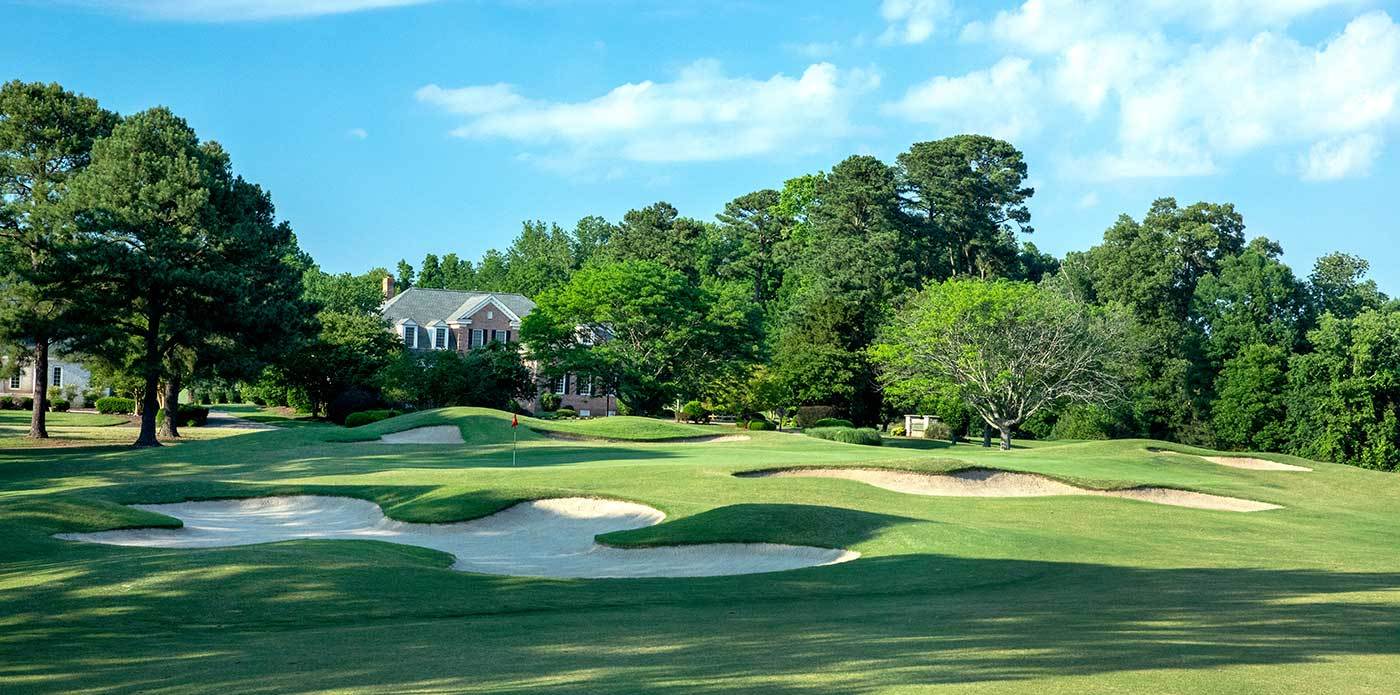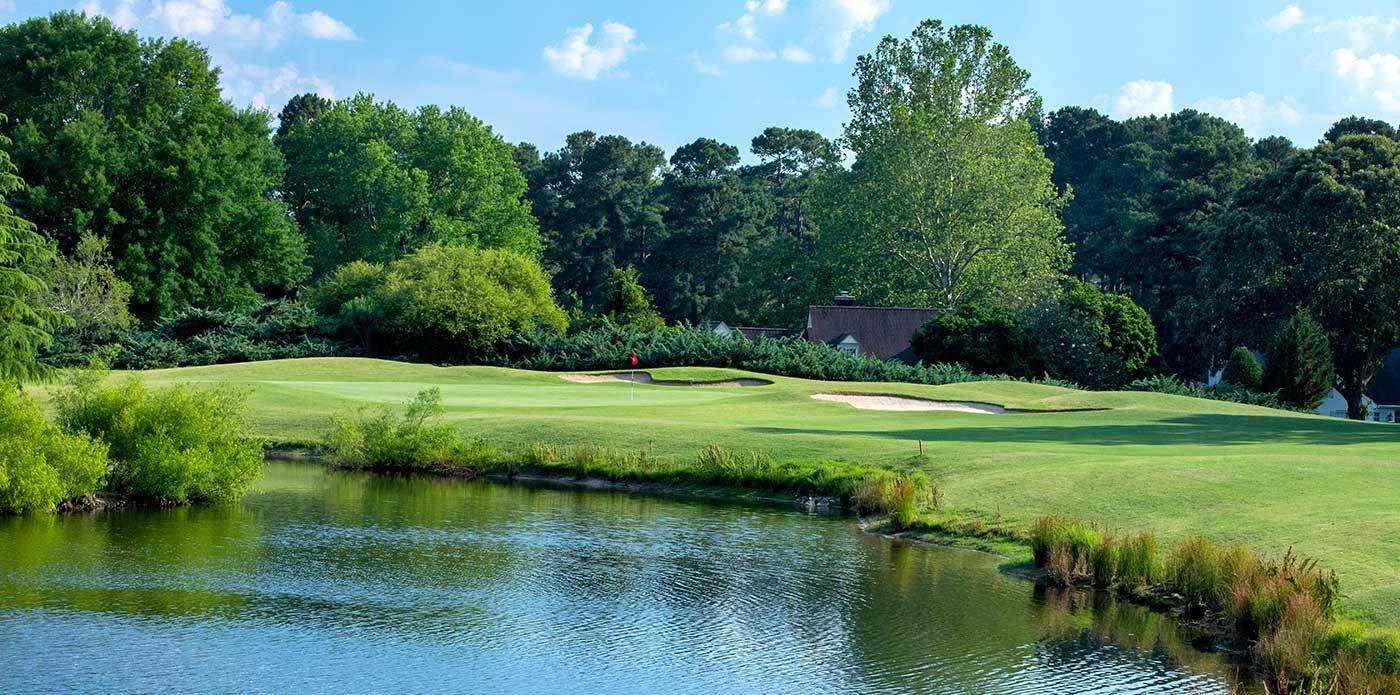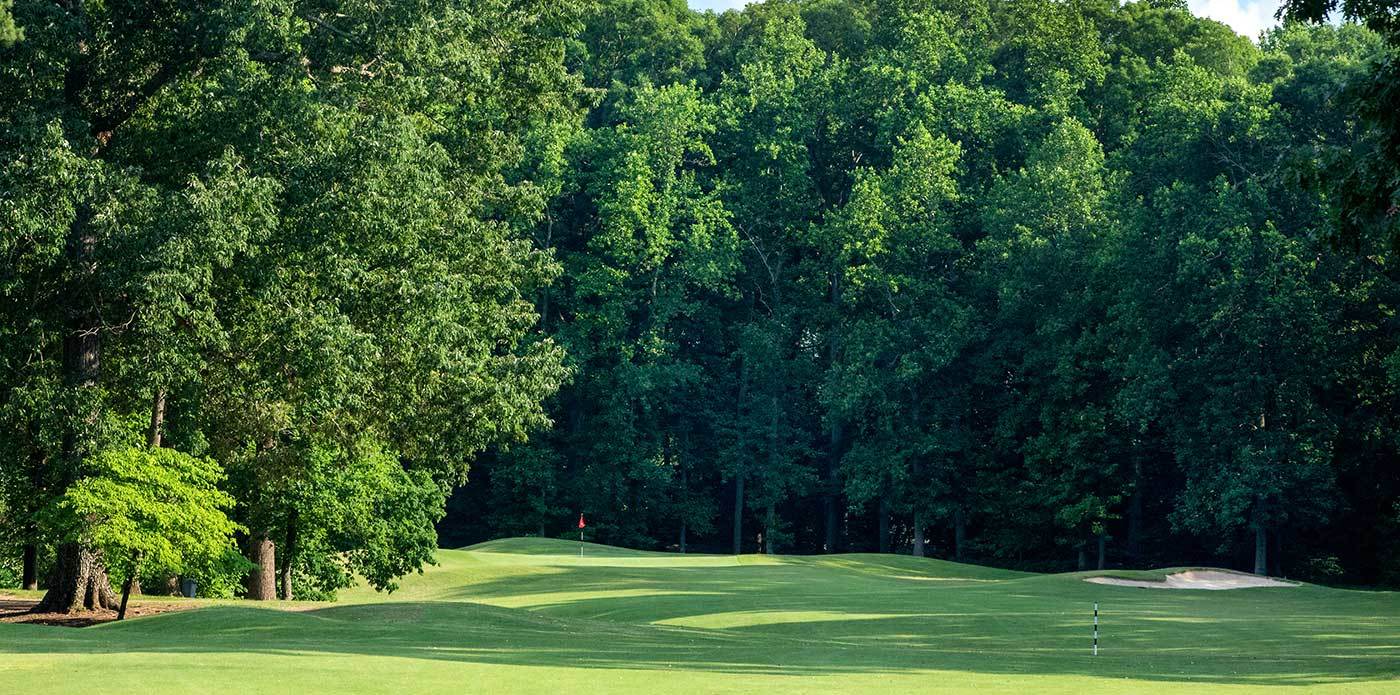THE PLANTATION COURSE
The Plantation Course is an Arnold Palmer and Ed Seay design that challenges players of all every skill level. With landmarks from Richard Kingsmill’s 1736 plantation woven into the landscape, a round on this Kingsmill golf course is truly historic.
You’ll find this 6,432-yard, par-72 course favors accurate iron play and good putting. Fairway landing areas are generous, but water comes into play on eight holes, and there’s no shortage of deep woods or yawning ravines. The large greens make for inviting targets for approach shots, and once on the putting surface, undulations and swales make getting down in two a satisfying accomplishment.

Group Golf Outings on The Plantation Course
Kingsmill Resort is the perfect place to host your next tournament, corporate outing, or fundraiser single-day event. Our golf and operations team is willing to create the perfect custom event, centered around your needs.
The Plantation Course

Hole 1
A narrow, undulated green is protected by bunkers on both sides. An approach played from the left side of the fairway provides the best opportunity to score.

Hole 2
This par five requires a drive and approach favoring the right side to avoid a hazard running on the left. A large green will entice the longer hitter, but the bunkers surrounding can lead to bigger problems.

Hole 3
Accuracy from the tee is a priority on this tight par four. Tee shots should favor the left center of the fairway. A large, sloped green will leave putts breaking from every direction.

Hole 4
The most difficult hole on the front nine, this hole requires complete precision off the tee. A hazard running on the left and OB on the right make this hole visually intimidating. A well placed tee ball leaves a mid-iron into a reasonably flat green.

Hole 5
A par three where short is not a bad miss. With bunkers right and a steep embankment left, this tee shot demands precision into likely the smallest green on the course. Par is a great score here.

Hole 6
Tee shots should favor the left center of this fairway, leaving a mid-iron into a large green. A multi-tiered green makes an accurate approach a must for the best chance at birdie.

Hole 7
This short par four rewards a left to right shaped tee shot, which will leave a short-iron for the approach. Favor the left side of the green, as a bunker on the right makes a back pin nearly untouchable.

Hole 8
The epitome of a risk-reward par five. Most players should hit a long-iron or fairway wood off the tee, leaving the same club in hand for the second shot. Longer hitters can attempt to cut the corner, enabling its reach in two. Favor the right side on approaches into the green.

Hole 9
Pinpoint accuracy serves best on the shortest of the courses par threes. A multi-tiered, undulating green is protected by two bunkers and a hazard running along the right

Hole 10
Pinpoint accuracy serves best on the shortest of the courses par fours. A multi-tiered, undulating green is protected by two bunkers and a hazard running along the right.

Hole 11
Not to be outdone, this grueling par four requires an accurate tee shot leaving a long-iron in hand for the approach. The large but undulating green is surrounded by hazards on the right and the rear. Pars are few and far between.

Hole 12
This par five is a reprieve from its two predecessors. A tee ball down the middle will allow reaching this hole in two possible. A hazard fronting the green splits the hole in half, requiring those laying up to be frugal in gauging the proper distance.

Hole 13
This par four is a reprieve from its two predecessors. A tee ball down the middle will allow reaching this hole in two possible. A hazard fronting the green splits the hole in half, requiring those laying up to be frugal in gauging the proper distance.

Hole 14
Another short but well protected par three, this hole requires an accurate tee ball to avoid moguls left and long, and a hazard to the front and right of the green. Putting will be extremely determinant on the hole location.

Hole 15
Unreachable by all but the longest of hitters, this is likely the only true three shot par five on the course. Tee balls should favor the left side, as well as second shots and approaches into the green. Two bunkers and a hazard on the right guard a relatively flat green.

Hole 16
An accurate tee ball is a must, as strategically placed bunkers make approaches from them extremely difficult. Bunkers surround this multi-tiered, undulating green. Do not take this short hole lightly.

Hole 17
Protected by a large marsh in front, the tee shot into this hole can range from downhill to uphill depending on the chosen tee.

Hole 18
A hard dogleg left par four requires a long-iron or fairway wood first shot aiming at the bunker directly in front of the tee. A short-iron approach favoring the front of the green is a must to avoid a hazard running immediately over the back. This hole can make or break your round.
Kingsmill Resort Packages
Kingsmill Golf Courses

River Course
This “must play” course is home to 38 PGA and LPGA tour events including the Pure Silk Championship.

The Woods Course
One of America’s Top Golf Courses sits in a secluded corner of Kingsmill resort, open exclusively to Members and their guests.







